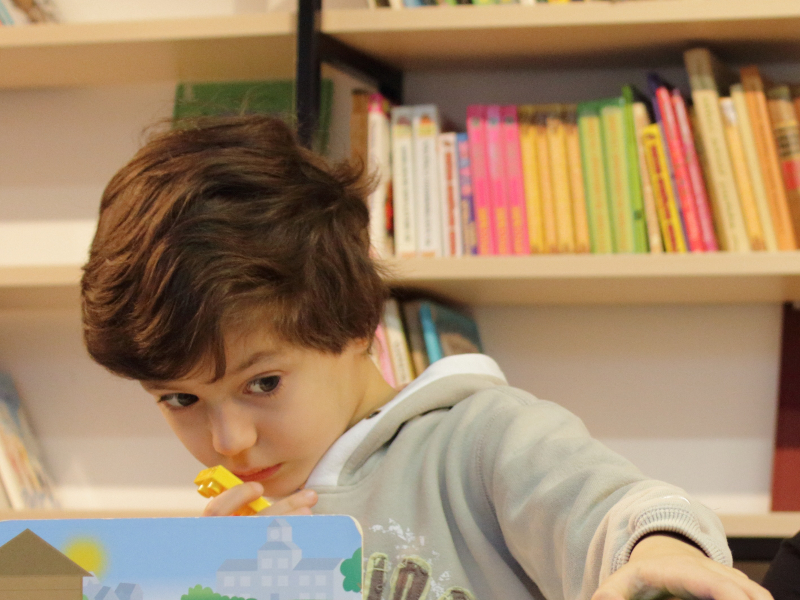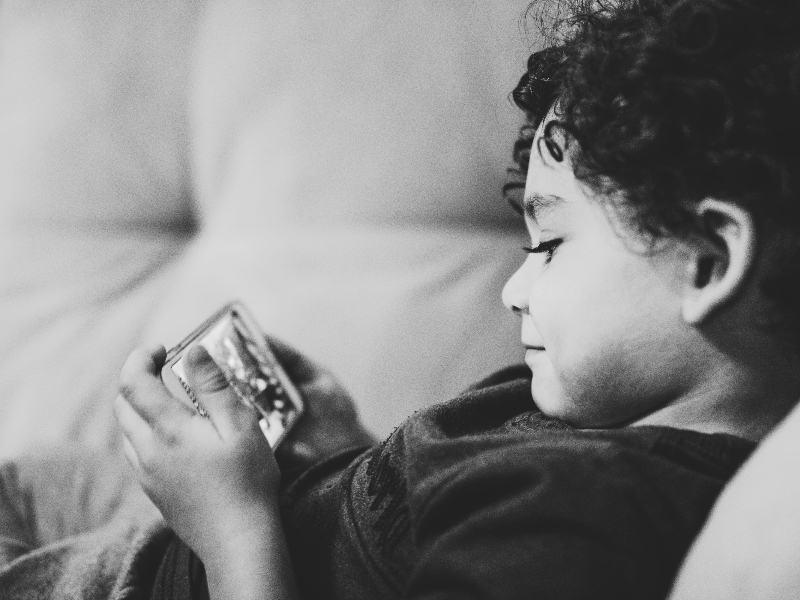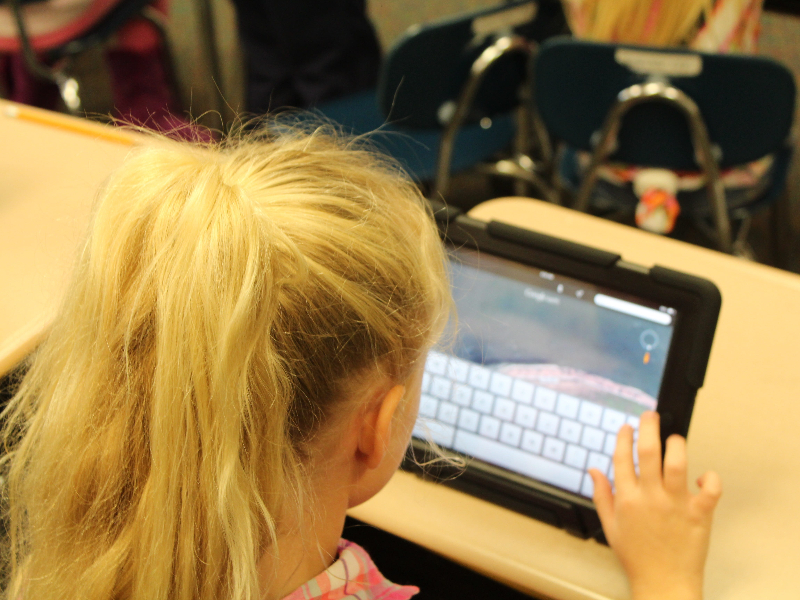We live in a world today where children are “growing up digitally,” and parents have increasingly expressed their anxiety about the same. Post Covid-19, we now live in a new normal world, where the use of digital gadgets has increased than before. Learning and growing up through digital content consumption is becoming a regular affair.

Digital technology is all-pervasive and becoming inevitable in developing 21st-century skills for enhancing critical and creative thinking. Among the end-users, children have become one of the most avid internet users – using a range of information and communication technologies. One of every three internet users worldwide is a child or adolescent under the age of 18. The Internet and Mobile Association of India (IAMAI) estimates that 66 million Internet users in India are between the age of 5 years and 11 years.
According to global statistics, young children are gradually using emerging technology. Children have been referred to as “digital natives” in the literature, implying that children grow up surrounded by smartphones and gadgets and know how to use them. Increased use of the Internet and digital content has its fair share of pros and cons, but can we as the torchbearers, make it more useful or guide the children to use it better?
Children are frequently using the Internet to:
- Learn – Digital media provides access to information, knowledge, opinions, education tools, and even teachers. Also, educational games and toys promote game-based learning, enhancing a child’s critical and creative thinking, logical reasoning, problem-solving, and real-world application of the concepts they learn in class.
- Communicate and Interact socially with Friends and Peers – With the unprecedented pandemic living amongst, digital platforms have enabled children to express ideas, share information and experiences. Besides chatting with their friends, the gamification of educational concepts that involve multiple players allows them to engage in collaborative thinking.
- Engagement – Digitization has enabled ease of game-based learning. With the help of well-curated digital content, it can enable children to engage at deeper levels and push their creative boundaries. Simultaneously, the accessibility to play and watch online video content has also been enhanced.
- Innovate, Create and Share – Digital media nowadays provides opportunities to clarify doubts, learn new skills and even develop mobile applications at as young as 7 years. By putting critical and creative thinking skills to practical use in the context of social media, children can amplify their cognitive abilities. Digital content has bridged the geographical constraints and ironed out time zone wrinkles for many students. Yet, at another level, guided access to digital forums and communities also act as an extended collaborative tool for the students.

At the same time, spending time online for both children and adolescents is also associated with the potential risk of absorbing harmful content, cyberbullying, and excessive screen time leading to ‘digital addiction’. As we evolve to being parents, we have gone through these nightmares in our childhood, and we know how harmful they can be. Our generation was the first to experience the evolution of the Internet, but can we create a better-guided ecosystem for our kids and the upcoming generation?
Top 4 points to provide a safe environment for 7 years old while consuming content digitally
- Parental Supervision – Parents play a pivotal role in adopting various strategies to keep their young children safe while consuming digital content. However, as parents, we need to learn to balance surveillance and trust in our relationship with our children. These are some of the tips which can be used for necessary safeguarding:
- Use web browsers, internet service providers, and devices’ parental controls/search restrictions. For example, Google’s Safe Search Filters can block pages containing explicit sexual and violent content
- Use child-friendly search engines like YouTube Kids, Kiddle, Zolley, etc.
- Create a family media plan and involve children in the same by asking for their suggestions, which can include internet safety rules, apps that can be used, screen time specifications, and setting internet-free zones in the house (for instance, no devices around at the dining table, during mealtimes or family time)
- Keep the screens and devices at a central place, allowing easy monitoring; depending on the individual parent’s comfort and family situation, one can consider checking browser histories once in a while; block in-app purchases
- Be aware of the policies and regulations regarding online content and how to make complaints about offensive digital content
- Periodically reviewing all online subscriptions and digital educational games and toys

- Communication – Nothing is more important than an open, healthy discussion and teaching about safe and responsible online behaviour to our kids. It is crucial more now than ever before to instil digital skills by teaching our children how to safely, responsibly, and enjoyably consume digital content. A few tips that might come in handy:
- By participating in online activities of our children
- Discussing the content available online, explicitly mentioning what is ‘good and not appropriate’ content and making use of those situations when they see something which worries them to learn about their emotional responses
- Our children imitate what we do, it is advisable to exhibit safe and healthy internet use in front of our children
- Teaching our children to be cautious with personal details; not to give out any form of personal information related to any of the family members, and to take permission before downloading any new app
- We can help develop critical thinking by assisting children in recognizing secure and trustworthy websites while at the same time advising them to exercise caution when accessing, downloading, sharing, or uploading content

- Balance of Passive and Active Consumption – While e-learning is an exciting form of learning, an excessive amount of exposure to digital media at a young age can be harmful to certain aspects of brain development for kids. As parents, we should help them balance their routine for online exposure and regulate the amount of time they spend on digital screens. While active participatory content can be helpful, on other hand, prolonged exposure to passive content can be harmful to cognitive functions development.
- Rate of Exposure – According to several studies, we should restrict the amount of time a child spends on digital content and digital screen to a maximum of 4 hours every day. One of the easy ways to regulate screen time is to allow them short sessions, say of 30 minutes mixed with offline studying, including reading books, writing, etc. Here the educational activities that involve a mix of screen time, pen, and paper can be instrumental in their holistic development.
Summing Up
When used responsibly and in an age-appropriate manner, digital content can help children learn, indulge in creative and critical thinking, and develop various 21st-century skills they will need in the future. Especially in children as young as 7 years, we as parents have to be actively and consciously involved in our child’s digital media journey. A keynote to remember: Always try to balance supervising our children’s digital activities and having trust in our children.


4 Comments. Leave new
Woah! I’m really digging this website. It’s simple, yet effective. A lot of times it’s hard to get that “perfect balance” between user friendliness and visual appearance. I must say that you’ve done a amazing job with this. Outstanding Blog!
Thanks for sharing such a good idea, piece of writing is good, thats why i have read it completely.
There is definitely a lot to learn about this issue. I like all of the points you have made.
I have learnt several excellent stuff here. Definitely value bookmarking for revisiting.
I am surprised how a lot efforts you placed to create this meaningful informative web site.